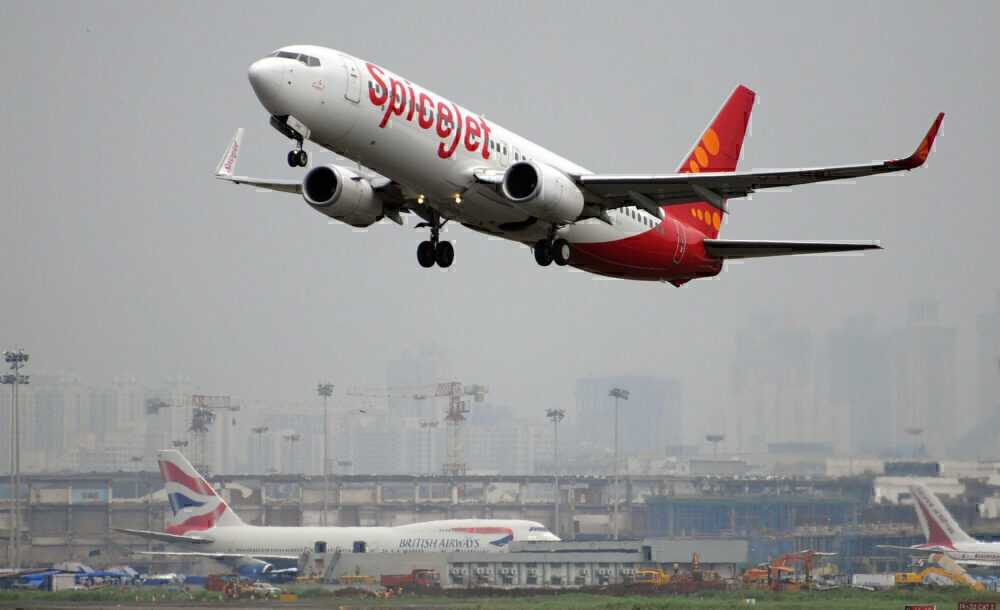India is undoubtedly a difficult market for full-service airlines to break into, with low-cost carriers dominating the landscape. From Kingfisher to Jet Airways and loss-making Air India, full-service carriers have struggled to remain in the skies. But why is India such a difficult market for these airlines?

Price sensitive
One crucial characteristic of the Indian domestic market is that it remains extremely price sensitive. This means even small price differences are enough to lure passengers away from airlines, with relatively little loyalty to individual carriers. The difference in pricing means that full-service airlines struggle to maintain their high costs as well as offer competitive fares.
We can see the difference in the success of full-service and low-cost airlines by studying their load factors. In December 2019, before the pandemic impacted the market, SpiceJet reported a load factor of 92.7%, while IndiGo saw 91.5% of its planes full. By comparison, Vistara saw a load factor of 81.1% and Air India 80.8%. The gap in load factors shows how far behind these premium airlines are, compared to their budget competitors.

In other markets, premium airlines rely on high-paying business travelers, corporate contracts, and ancillary revenues (credit cards, mileage programs, etc.) to remain profitable. With loyal customers willing to pay slightly more to fly their preferred carrier, these airlines can command higher fares than their low-cost peers.
However, this model has proven unsustainable in India. Jet Airways was the most prominent example of this business model. It offered key connections between major business hubs (Delhi, Mumbai, Bangalore, and more) and had its fair share of business travelers. However, despite all of its ancillary revenues, partnerships, and some loyalty, it collapsed in 2019 after years of losses.
Stay informed: Sign up for our daily aviation news digest.
High costs
Another feature of the Indian market is the extremely high costs of necessities like jet fuel. Fuel prices and subsequent high taxes mean that jet fuel accounts for nearly a third of airlines’ costs, according to The Economic Times. This is nearly double the global standard of 12-16% of airlines’ costs for fuel in the last few years.
Other policy changes, both macro and micro, also hurt growing airlines. From India’s open skies agreement allowing for more foreign carriers from the Middle East to not allowing airlines to share resources at small airports, carriers struggle with red tape across the industry.

Full-service airlines have little maneuvering room to reduce capital expenditure when seen in total. Purchasing new aircraft, some widebodies too, adding premium cabins, and offering free services means high expenses. Adding high input costs like fuel and taxes, and low fares are out of the picture.
Regulatory changes could help ease some of these pressures for struggling airlines and perhaps lead to profitability. However, the government has not shown willingness to make changes despite high-profile airline failures in the last few years. This could be due to the high costs it already covers subsidizing the debt-ridden Air India.
Constant moves
The years of extreme competition have forced airlines into a perennial state of ultra-low prices. This means no one airline has the power to raise fares without losing market share and each airline keeps prices lower than the other.
The situation has gotten so bad the government was forced to enforce price floors and ceilings to prevent airline collapses after domestic flights were allowed to resume in May 2020. After two months of grounding due to the pandemic, airlines might have triggered a price war to capture market share when flights resumed.

These pricing maneuvers leave little room for full-service airlines to charge premiums for their services. This explains why Air India and Vistara have both seen their market share slip in 2020 as passengers continued to look towards cheaper flights. While these airlines do capture 100% of the premium cabin travel, the Indian market is not yet large enough to sustain airlines with mostly premium traffic.
Changes coming?
While the past has looked bleak for full-service airlines, there could be some changes in the works. In 2019, the Indian government finally decided to give up 100% of flag carrier Air India and privatize the carrier. Potential buyers would need to take nearly $3bn of the airline’s debt and inherit a bloated organization.
However, an Air India privatization could shake up the market for good. With the government out of the industry (minus with regional carrier Alliance Air), Air India could refocus on select domestic routes and major international routes only, returning it to profitability.
Moreover, the privatization would also end Air India’s monopoly on many routes and reduce government expenditure on the struggling airline. This would clear the way for wholly competitive domestic and international markets.

International flights
While Indian full-service airlines struggle at home, international routes are one prominent area for profitability. Considering India only has two long-haul airlines, Air India and Vistara, there are several opportunities to start new routes and capture traffic. While low-cost airlines serve medium-haul routes in the Middle East and East Asia, there is more than enough room for full-service airlines.

While Air India is the market leader on direct routes to the US, hub airlines make up a significant chunk of the traffic. With carriers like Vistara expanding their long-haul footprint, full-service airlines could find profitability on these popular, business-heavy routes.
While low-cost carriers may dominate the domestic market, full-service airlines can still succeed. By focusing on long-haul international routes, key domestic routes, and not over-expanding, a path to profitability may just exist.
What do you think about the future of full-service airlines? Could they succeed in the Indian market? Let us know in the comments!
"difficult" - Google News
March 01, 2021 at 01:31PM
https://ift.tt/3uGTkdL
Why Is India Such A Difficult Market For Full Service Carriers? - Simple Flying
"difficult" - Google News
https://ift.tt/2VWzYBO
https://ift.tt/3d5eskc
Bagikan Berita Ini














0 Response to "Why Is India Such A Difficult Market For Full Service Carriers? - Simple Flying"
Post a Comment